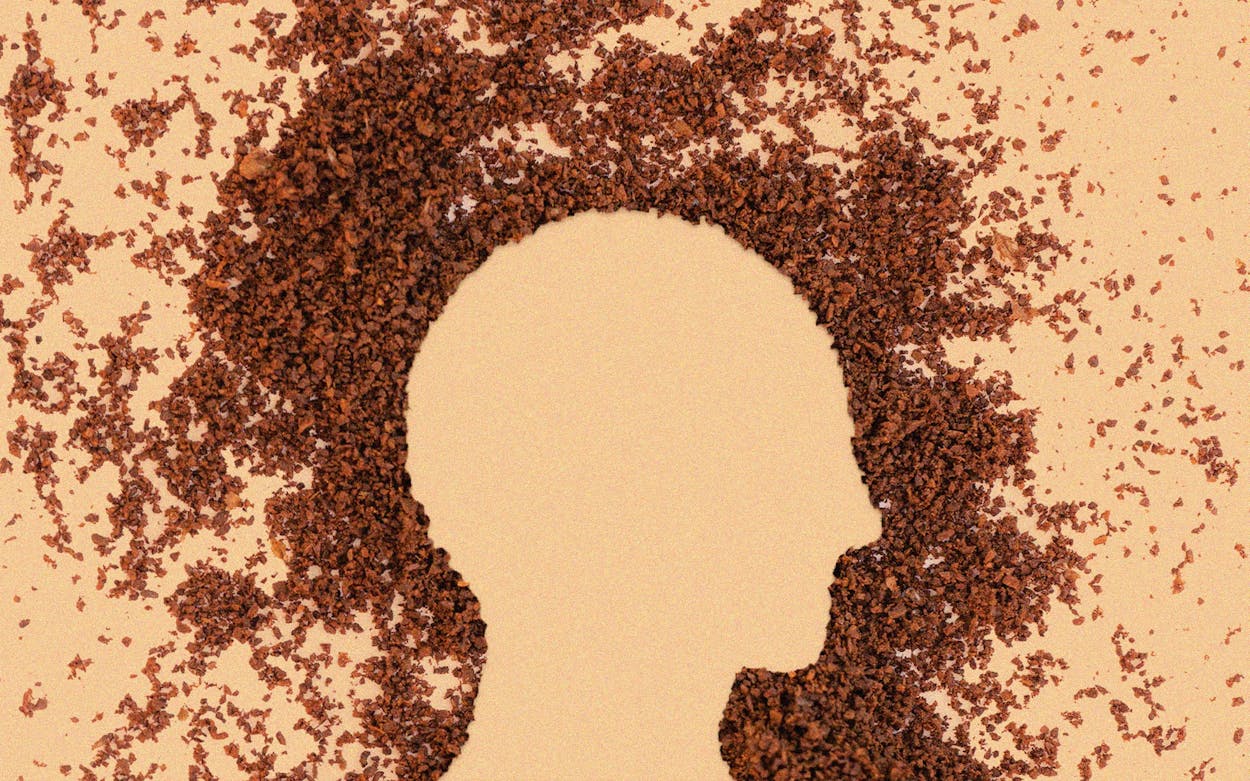Mahesh Narayan, a biophysicist and professor at the University of Texas at El Paso, envisions a day when a truck from a lab might back into a parking spot behind the local Starbucks in service of treating Parkinson’s disease. Recent studies have demonstrated a correlation between drinking coffee and improved neurological function, but the chemical engineers in Narayan’s hypothetical scenario aren’t looking for a cup of coffee—they want the used grounds.
In a recent study published in the journal Environmental Research, graduate students in Narayan’s lab at UTEP demonstrated that tiny particles called caffeic acid–based carbon quantum dots (CACQD)—which can be derived from spent coffee grounds—may have attributes useful in fending off neurodegenerative diseases such as Parkinson’s and Alzheimer’s. These conditions affect millions of Americans, and while promising treatments have emerged in recent years, cures remain elusive.
CACQDs can be also derived from unused coffee beans and several other organic materials that naturally contain caffeic acid, but Narayan’s team sought to reduce the environmental impact of their potential treatment by focusing on what might be reused from coffee grounds otherwise bound for a landfill. “You’re taking trash, and you’re making something that’s medically useful and which can impact lives,” Narayan says.
Led by graduate student Jyotish Kumar, the UTEP lab didn’t actually bring spent coffee grounds into the lab for this study. Instead, researchers used caffeic acid bought from a chemical supplier, the consistency of which would enable them to have reproducible results, a key element in any peer-reviewed study.
By “cooking” the acid at 230 degrees Celsius for hours in a stainless steel container submerged in water, the students reoriented the carbon structure of the acid to create the quantum dots. This process enhances the naturally beneficial properties of the caffeic acid, Narayan says, and results in a product that research has shown can likely enter the brain and, at least in these early stage experiments, can help protect against neurodegenerative disease on several fronts.
When the researchers tested the quantum dots on cells that are commonly used in lab experiments to mimic the behavior of human brain cells, they witnessed something remarkable. All of the cells were exposed to a pesticide called paraquat, which is linked to Parkinson’s. The pesticide caused cell death in samples that hadn’t been treated with the CACQDS, but in the treated samples, the quantum dots prevented the harmful effects of the paraquat. Additionally, Kumar’s team found that the CACQDS could prevent damaging amyloid-forming proteins from developing and could eliminate or neutralize so-called free radicals, unstable molecules in the body that are associated with neurodegenerative diseases, as well as cancer, heart disease, and autoimmune conditions.
Besides laying the early groundwork for a potential treatment for diseases such as Parkinson’s, Dr. Natalia Pessoa Rocha, an assistant professor in the department of neurology at UTHealth Houston, who was not involved in the study, notes that the research may also shed light on why drinking coffee might lead to a reduced risk of dementia, stroke, and Alzheimer’s. Both Rocha and Narayan caution that this research is in its earliest stages, and Rocha emphasizes that there will not be a one-size-fits-all remedy for every neurodegenerative disease.
The UTEP students tested the CACQDs in test-tube experiments and cell lines, but they haven’t yet proven their effectiveness in animals, let alone humans. Narayan says the next step is to test the treatment on nematodes (small worms commonly used in scientific research) in which Parkinson’s has been induced. If the animal tests produce promising results, the treatment might move on to human clinical trials, with the ultimate goal being the development of a drug to help prevent these medical conditions. For such a drug to be effective, Narayan says, the disease would need to be identified early in its development—even before a patient is demonstrating symptoms.
Because there is no cure for neurodegenerative disease—nothing that has been shown to sufficiently regenerate damaged brain cells—preventive measures are currently doctors’ most powerful tool. Last year the FDA approved lecanemab, which has been shown to slow the advance of Alzheimer’s disease. It’s far too early to tell whether the potential treatment cooked up at UTEP will ever yield similar results. But Dr. Brendan Kelley, a neurologist at UT Southwestern Medical Center, in Dallas, says he’s encouraged, by work such as Narayan’s, “to see people who are coming at this from very different disciplines.”
Kelley, who is part of a massive clinical trial of lecanemab, also notes that there are “low-tech” remedies than can significantly reduce the risk of neurodegenerative conditions. He cites a study in the prestigious medical journal The Lancet that found that closely monitoring and addressing twelve risk factors, including high blood pressure, hearing loss, alcohol use, and diabetes, could reduce the global burden of dementia by as much as 40 percent. “There’s a lot of good reasons to focus our attention on some of those and say, ‘Gee, that could improve a person’s overall health, in addition to reducing the risk of developing dementia,’ ” Kelley says.






